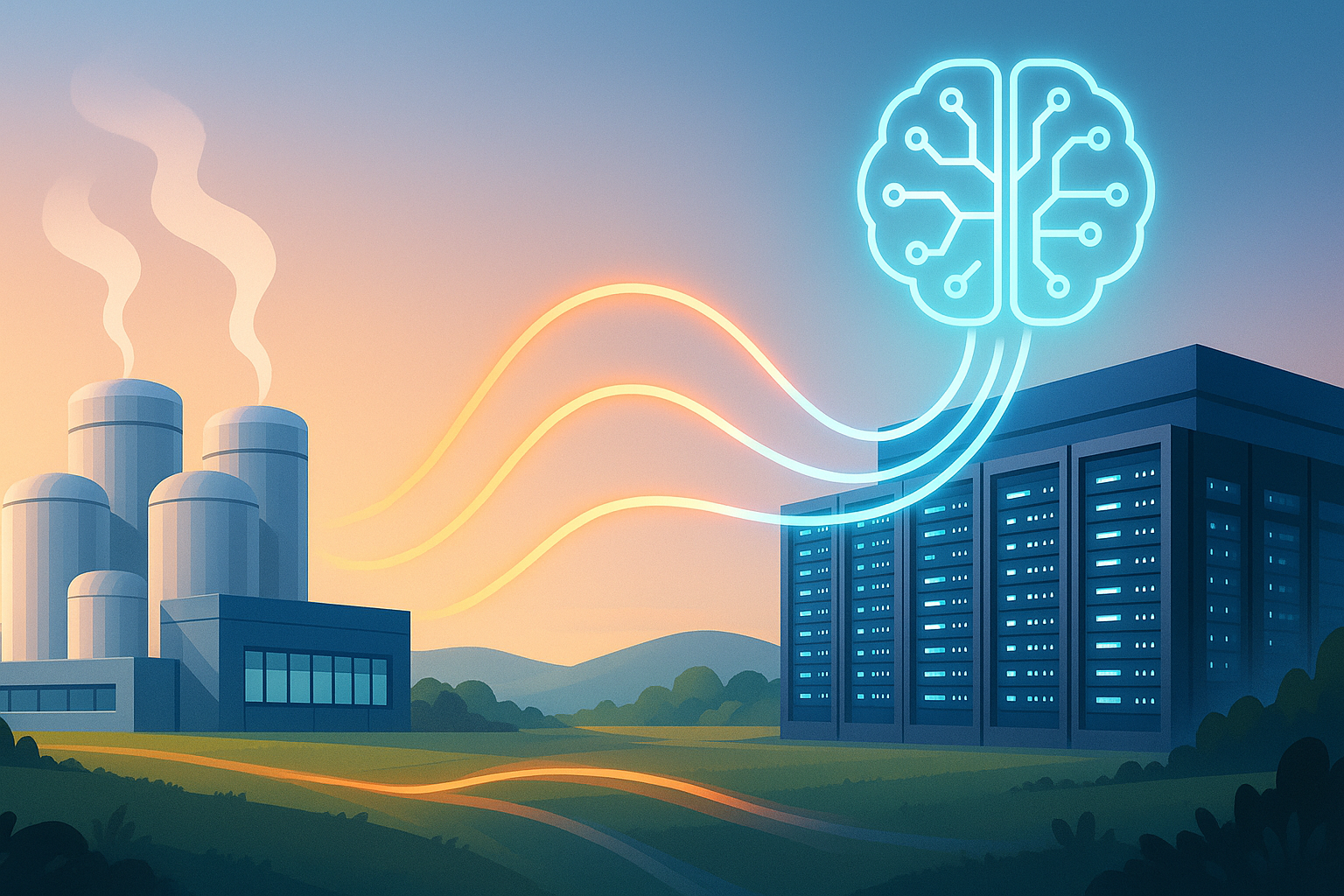Remember nuclear energy? That dinosaur technology we were all ready to put in museums next to coal plants and steam engines? Well, hold onto your uranium rods—it's staging one hell of a comeback.
And the reason might surprise you: artificial intelligence, that digital darling consuming electricity like there's no tomorrow.
While tech investors have been obsessing over the latest Nvidia chip drops or hanging on every word from OpenAI, something remarkable has been happening in the nuclear sector. Companies like OKLO have rocketed more than 500% this year. NuScale Power? Up 150%. Not too shabby for an industry many considered deader than disco.
I've been tracking energy markets for years, and this revival isn't just speculative froth. It's the cold, hard recognition that our AI ambitions might literally run out of juice without nuclear's steady baseload power. Think about it—where exactly did we plan to get all that electricity to run our ChatGPT adventures?
The numbers are, frankly, staggering. We're potentially looking at global nuclear capacity tripling by 2050, with investments exceeding $3 trillion over the next quarter-century. Some analysts (the optimistic ones with PowerPoints full of hockey-stick graphs) suggest the total addressable market could hit—wait for it—$10 trillion.
That's trillion with a T.
Look, nuclear's had its problems. The investment case has always been complicated by the "it's clean but costs a fortune" reality. Projects routinely blow past budgets by billions and arrive years late. Georgia's Plant Vogtle stands as the cautionary tale—the project your nuclear engineering professor warns you about on the first day of class.
But here's where it gets interesting.
Rather than building those massive, cathedral-sized conventional reactors, the industry is betting on small modular reactors (SMRs). Think of them as nuclear power plants you can order on Amazon. Well, not quite—but they're factory-built, standardized units that can theoretically be shipped and assembled without the customary cost nightmares.
NuScale has the distinction of being the only company with an NRC-approved SMR design. They're targeting 2030 for market-ready reactors. (In nuclear speak, that's practically tomorrow, though I'd take that timeline with enough salt to melt a winter's worth of ice in Boston.)
Then there's Oklo, which until recently had none other than OpenAI's Sam Altman as chairman. Connection? Not coincidental. Altman's AI dreams require massive electricity, and he's smart enough to know it.
Oklo is making the bold—some might say wildly optimistic—claim that it can deliver power by the end of 2027. Having covered energy startups for a decade, I've learned to multiply announced timelines by 1.5, minimum. But even with delays, that's revolutionary speed for this industry.
The situation creates a delicious irony. Nuclear power—the technology environmentalists have been trying to kill for decades—might become essential infrastructure for our AI future. It's like discovering your dad's old Walkman is suddenly crucial for developing quantum computing.
And here's the crunch point: A single large-scale AI model training run devours as much electricity as 100 American homes use in a year. And that's just training! Once these models start running in everything from your dishwasher to your doctor's diagnostic tools, the power demand curves become terrifying.
I spoke with three energy analysts last week who all used the same word to describe the situation: "unsustainable." One told me, "We simply can't build solar and wind fast enough to keep up with AI's appetite."
That's where nuclear enters, stage right, for its unexpected second act.
Of course, risks remain. Regulatory hurdles are formidable (just ask anyone who's sat through an NRC hearing). Public perception hasn't completely shifted—Three Mile Island and Fukushima still haunt the public imagination. And those ambitious timelines? They could slip. They probably will slip.
But the fundamentals? They're compelling in a way they haven't been for decades.
While solar panels will continue popping up on rooftops and wind turbines will keep spinning across landscapes, they face real limitations in density and reliability. Nuclear offers what data centers desperately need: constant, carbon-free power that doesn't fluctuate when clouds pass overhead or the wind dies down.
And unlike previous nuclear renaissances that fizzled, this one has a clear customer base with pockets deeper than the Mariana Trench and an urgent need for power. Microsoft, Google, and Amazon aren't just willing to sign long-term power agreements—they're practically begging for them.
So maybe—just maybe—this time is different.
After spending fifty years as the perpetual energy source of tomorrow, nuclear power might finally be having its today. And all because our smart machines turned out to be power-hungry beasts.
Isn't technology funny that way?
